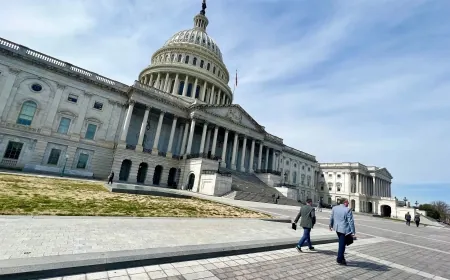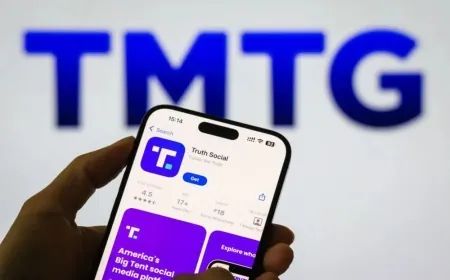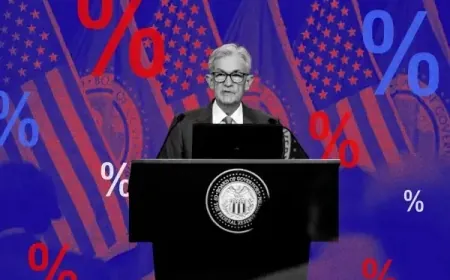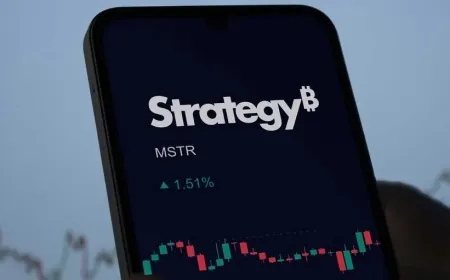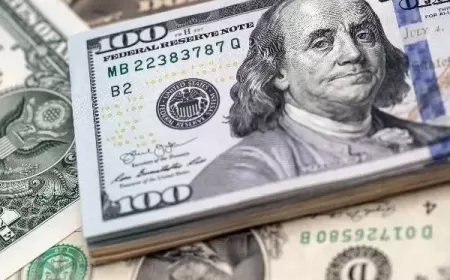Fed Rate Cut May Not Lower Mortgage Rates as 6.58% Becomes the New Benchmark
Mortgage rates dropped to 6.58%, lowest since Oct 2024. But with bond yields setting the tone, a Fed cut in September may not bring cheaper loans.
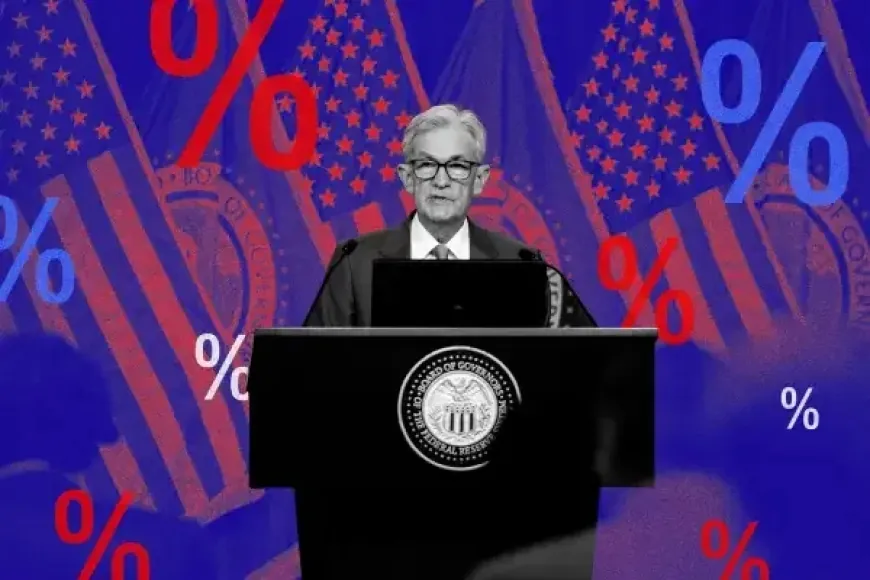
Mortgage rates in the U.S. have slipped to 6.58% this week, their lowest level since October 2024, according to industry surveys. The move marks the first sustained decline after months of stubbornly high borrowing costs that sidelined many buyers and slowed refinancing activity.
The drop comes just weeks before the Federal Reserve’s September 16–17 policy meeting, where officials are widely expected to lower benchmark interest rates. But history suggests borrowers shouldn’t assume cheaper mortgages will follow. Mortgage rates are shaped primarily by the bond market, not the Fed’s short-term rate, and in past cycles—including late 2024—mortgage costs have actually risen after a Fed cut.
For households, the timing matters. Redfin data shows a buyer with a $3,000 monthly budget now has about $20,000 more purchasing power than in May, when average mortgage rates topped 7%. Whether that advantage holds through September depends on upcoming reports on inflation and hiring, which could send rates swinging again before the Fed makes its move.
Why Fed Cuts Don’t Guarantee Lower Mortgage Rates
The first misconception to clear up is that the Federal Reserve sets mortgage rates. It doesn’t.
The Fed controls the federal funds rate — the overnight rate at which banks lend reserves to each other. That benchmark influences short-term borrowing like credit cards, auto loans, and home equity lines of credit. When the Fed cuts, those rates typically fall quickly.
Mortgages, however, are long-term products. A 30-year loan doesn’t hinge on overnight bank lending. Instead, it moves with the 10-year U.S. Treasury yield because global investors treat that bond as a baseline for “safe” returns. Mortgage-backed securities must offer a premium above Treasuries to attract buyers, and that spread — usually between 1.5% and 2% — determines where mortgage rates land.
Several factors push Treasury yields up or down:
-
Inflation expectations: If investors fear higher future inflation, they demand more return, pushing yields higher.
-
Government borrowing: Large Treasury issuance can lift yields as supply rises.
-
Global demand: In uncertain times, overseas investors buy Treasuries, pushing yields lower.
-
Market volatility: Wider risk spreads often keep mortgage rates elevated even when Treasuries fall.
The key point: The Fed influences these forces, but it does not control them directly.
History Shows Fed Policy Doesn’t Always Lower Home Loans
The last time the Fed began cutting rates, in late 2023, mortgage rates did not fall. In fact, they climbed above 7% as bond investors concluded that easier policy would fuel inflation.
Looking further back shows the same pattern.
-
2019: Mortgage rates fell after Fed cuts, but the real driver was a global slowdown that sent investors rushing into safe assets.
-
2020: Pandemic panic crushed Treasury yields, pulling mortgage rates to record lows, regardless of Fed actions.
-
1980s: Fed rate moves were often overshadowed by double-digit inflation, keeping mortgages volatile and high.
These examples demonstrate that mortgage rates respond to expectations, not announcements. By the time the Fed acts, markets have already priced in the likely path.
Mortgage Costs Show Fed Expectations Baked In
Today’s 30-year fixed mortgage sits around 6.58%, according to industry surveys, down from more than 7% in May. That drop gives buyers about $20,000 more purchasing power if they have $3,000 per month to spend on housing.
But much of that decline reflects anticipation of a Fed cut in September. The CME FedWatch tool shows traders assigning an 85% probability that the central bank will reduce its benchmark rate. In other words, the bond market already expects the Fed to move — and has adjusted mortgage pricing accordingly.
What could change the picture between now and September are incoming economic reports:
-
August jobs numbers: Weak hiring could signal a slowing economy, pushing yields down.
-
Consumer inflation (CPI): Softer readings would boost confidence that the Fed can cut further.
-
Producer inflation (PPI): Rising business costs could reignite inflation fears, lifting yields.
If these reports come in hotter than expected, mortgage rates could rebound quickly. That’s why many lenders caution against waiting too long.
Buyers: More Power, But Still Stretched
For buyers, the recent dip offers real but limited relief. At 6.6%, monthly payments on a $400,000 loan are about $110 cheaper than at 7%. That translates into more room in the budget or slightly larger loan approval.
Yet affordability remains tight. Home prices haven’t softened significantly because inventory remains scarce. Many sellers are reluctant to list their homes while holding sub-4% mortgages secured during the pandemic. This “lock-in effect” has left the market short of supply, keeping prices high despite higher borrowing costs.
Example scenario:
-
May 2025: Buyer with $3,000/month budget could afford roughly a $430,000 home.
-
August 2025: Same buyer can now afford about $450,000.
That $20,000 difference may matter in competitive markets, but it doesn’t fundamentally change the affordability crisis.
Refinancers: A Narrow Window of Opportunity
Refinancing is trickier. Most U.S. homeowners hold loans originated between 2020 and 2022, when mortgage rates were in the 2.5%–4% range. For them, refinancing today makes no sense.
But households who bought or refinanced in 2023 or 2024 at 7%+ could benefit now.
Consider this case:
-
A homeowner with a $350,000 mortgage at 7.2% pays about $2,380 per month.
-
Refinancing to 6.58% drops the payment to around $2,230.
-
That’s $150/month saved, or $1,800 annually.
Not life-changing, but meaningful. The danger is waiting too long. In September 2024, rates briefly hit 6.2%. Many homeowners prepared applications but hesitated, convinced rates would keep falling. Within weeks, rates were back at 7%. Those households missed out on $300–$400 per month in potential savings.
Sellers: A Slightly Better Market
For sellers, lower rates help on the margins. More buyers qualify for loans, and the pool of serious house hunters grows. But the improvement is incremental.
The bigger story remains inventory lock-in. Millions of homeowners with pandemic-era mortgages below 4% see no reason to sell and take on a loan at 6.5%. That keeps supply limited, sustaining high prices even as affordability wanes.
Lower mortgage rates might unlock some inventory if owners feel confident they can trade up without doubling payments. But the effect will be modest unless rates fall significantly further.
Investors: Watching Spreads and Yields
Institutional investors in housing — from private equity landlords to real estate investment trusts — focus less on the Fed and more on spreads and Treasury yields. Their financing costs and rental yield calculations depend on small shifts in long-term borrowing costs.
In volatile periods, investors may retreat, widening mortgage spreads and keeping rates elevated even if Treasury yields fall. That’s another reason why ordinary buyers shouldn’t assume Fed cuts will trickle into cheaper mortgages.
Many Buyers Wait for September Fed Move Before Buying
Mortgage professionals across the country report a similar frustration: clients waiting for September.
In Arizona, one loan officer described conversations where buyers insist on delaying applications until after the Fed meeting. “I have to remind them this is already priced in,” she explained.
In Georgia, another officer noted that “markets move on expectations. You only see big changes when expectations are wrong.”
This psychology creates missed opportunities. When rates dipped last year, many would-be refinancers froze, waiting for 5.5% that never came. By the time they realized the bottom had passed, rates were higher again.
Housing Affordability Still Stretched Despite Rate Relief
The mortgage story is part of a larger housing challenge. Even with rates below 6.6%, the combination of high home prices, stagnant wages, and limited supply means affordability remains historically strained.
-
Affordability Index: Still near lows not seen since the housing bubble era.
-
Inventory: Active listings remain far below pre-pandemic norms.
-
Demand: Millennials entering peak buying age continue to support demand, even at higher rates.
-
Construction: New home building is improving but still insufficient to close the gap.
Fed cuts can ease conditions at the margin, but the underlying problem — too few homes for too many buyers — won’t be solved by monetary policy alone.
How Today’s Rates Affect You
If you’re buying a home:
-
A 30-year loan at 6.6% instead of 7% saves about $100 per month on a $300,000 mortgage.
-
That’s real money over time, but not life-changing. If you can afford the payment now, waiting for September won’t guarantee a better deal.
-
Compare lenders. The difference between the best and worst quote can be bigger than the Fed’s cut.
If you’re refinancing:
-
Anyone who locked in at last year’s peak (around 7.5%) should run the numbers again.
-
Dropping even 0.75% can shave more than $150 a month off a typical $250,000 loan.
-
Don’t hold out for the “perfect” bottom — most people miss it. If the math works, act.
If you’re selling:
-
Lower rates make your listing slightly more attractive, but buyers are still stretched.
-
Price realistically. Overpricing now risks your home sitting unsold as more inventory comes online.
-
Show what monthly payments look like at today’s rates; it makes affordability clearer to buyers.
What could shake things up before September:
-
Jobs reports — weak hiring usually means cheaper mortgages.
-
Inflation data — hotter numbers push rates higher.
-
Treasury borrowing — big auctions can lift yields.
-
Global shocks — anything from war to a financial scare can pull rates down.
By mid-September, the Federal Reserve’s decision will be known, but mortgage markets may have already moved past it. Traders point out that the 30-year rate near 6.6% reflects months of anticipation, leaving little chance of a sudden break lower. What matters more now is how incoming inflation numbers and Treasury supply shape bond yields.
In other words, the Fed may set the tone, but the day-to-day cost of a mortgage will continue to be decided in the bond market.
Also Read: Mortgage Rates Hover at 6.74%, Existing Home Sales Set to Fall Again














